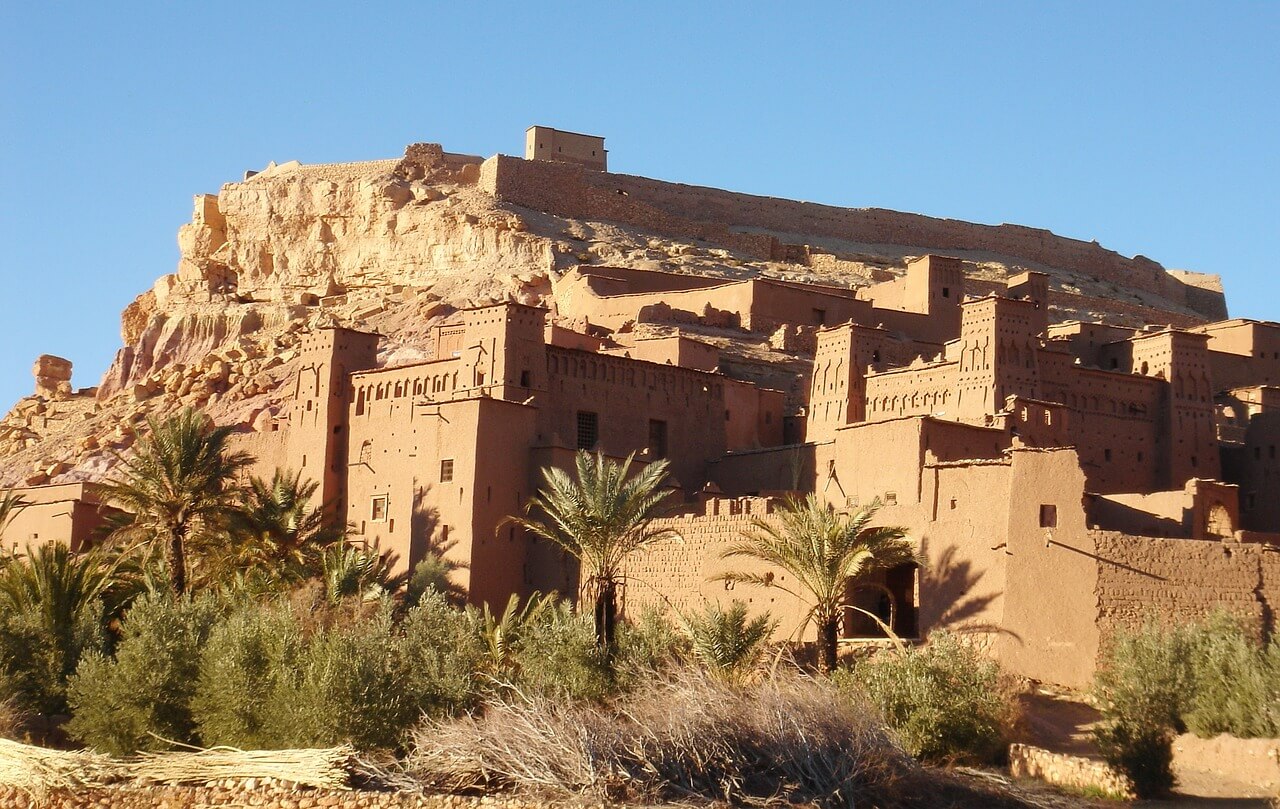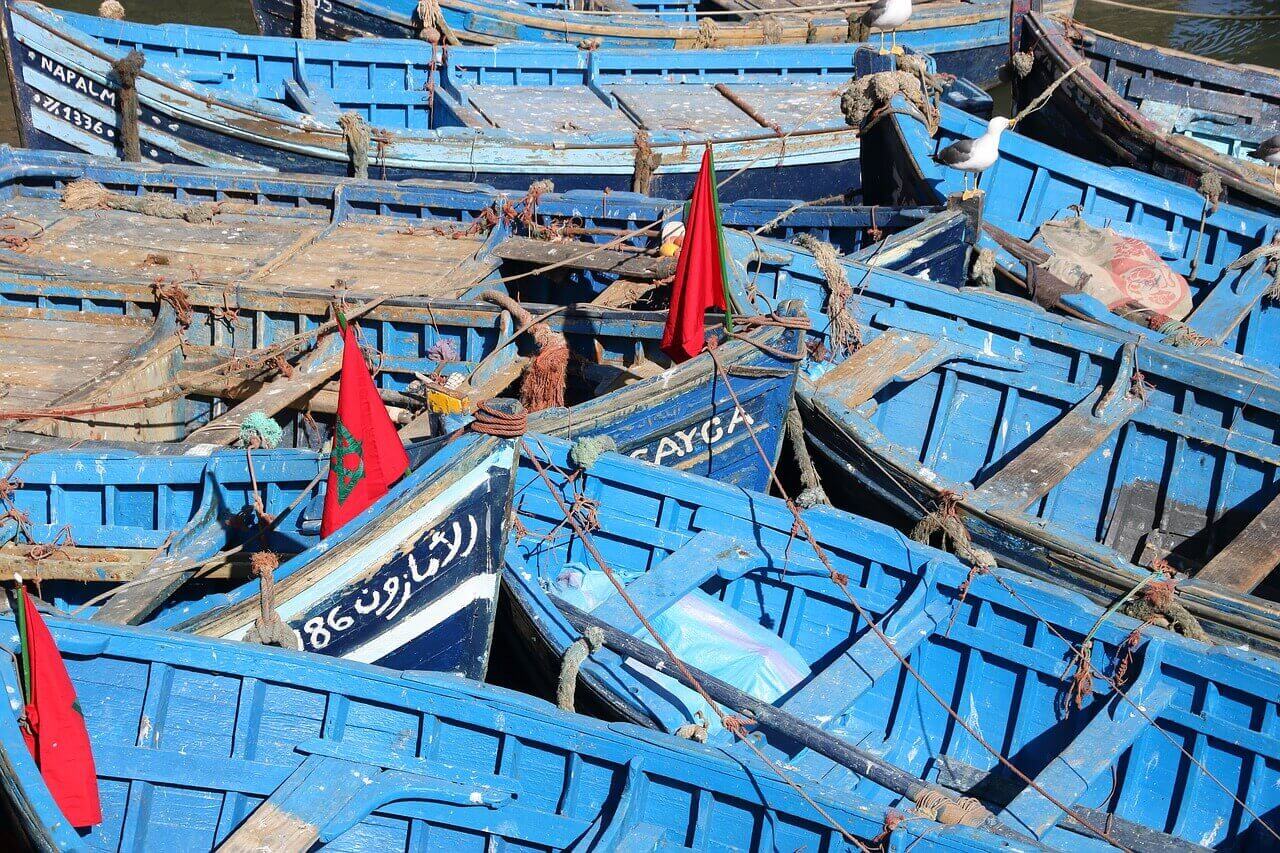Day 1: Casablanca
Day 2: Casablanca/Chefchaouen
Day 3: Chefchaouen
Day 4: Chefchaouen/Fès
Day 5: Fès
Day 6: Fès/Merzouga
Day 7: Merzouga/Sahara Bedouin Camp
Day 8: Sahara Bedouin Camp/Todra Gorge
Day 9: Todra Gorge/Aït Benhaddou
Day 10: Aït Benhaddou/Imlil
Day 11: Imlil/Essaouira
Day 12: Essaouira
Day 13: Essaouira/Marrakech
Day 14: Marrakech
Day 15: Marrakech
End of services
MOROCCO DISCOVERY ITINERARY
Day 1: Casablanca
Arrival at Casablanca Airport and transfer to your hotel. It's a Moroccan style New York and the country's business capital, with all the hustle and bustle that entails. Casablanca is more Europeanized than other parts of the country.
Day 2: Casablanca/Chefchaouen
After breakfast we leave Casablanca and drive further to Rabat to explore the Oudaya Kasbah and Chellah Necropolis where you see the roman-era city alongside the more recent ruins of the Almohad and Merenid dynasties of the 12th and 14th centuries. You have a chance to walk around it. We drive further to Meknes and after a few hours driving we arrive at Chefchaouen to spend the night. B
Day 3: Chefchaouen
Enjoy free time in Chefchaouen to explore. Chefchaouen is whitewashed in different shades of blue, is spectacular on its own but with the surrounding mountains, it's a sight to behold. At sunset, opt to visit the Spanish Mosque for a stunning panoramic view of Chefchaouen. B

Day 4: Chefchaouen/Fès
Drive to Meknes for a guided walk. Visit monuments, ornamental gates, and winding souks. Later, continue through the rolling hills to see Vollubilis, ancient Roman ruins. You can either walk the ruins alone or do an optional guided tour of the best-preserved Roman ruins in this part of Northern Africa, now a UNESCO World Heritage Site. After, continue to imperial Fès, one of Morocco's most interesting cities. B
Day 5: Fès
Enjoy a morning medina walking tour, with free time later to explore more of Fès. The Fès medina is the world's largest living medieval medina and a UNESCO site. Explore the artisan quarters, sample treats from the carts, and view Fès' famous leather tannery from above. In the evening, opt for dinner in a converted riad complete with local specialties, music, and belly dancing or visit a local hammam to chat with the locals. Additional Notes: Only certified local guides are allowed to act as guides in the medina, so your tour guide cannot enter the medina during free time. B
Day 6: Fès/Merzouga
Travel through the diverse landscapes that make Morocco so unique. Pass through cedar and pine forests, keeping an eye out for Barbary apes. Pass over the Middle Atlas Mountains through the pre-desert countryside with its deep gorges filled with a splendid oasis of green palm groves. Arrive at the sand dunes of the Sahara Desert. Spend the night in a desert auberge (simple hotel), located right near the dunes. Have a local-style dinner and spend the night. B/D
Day 7: Merzouga/Sahara Bedouin Camp
Enjoy free time until heading out on a camel safari late afternoon. Spend the cool morning exploring the undulating golden sand of the dunes or simply relaxing by the pool. Opt to explore the surrounding communities on a 4x4 excursion. In the afternoon, take an overnight bag and set off on a 1-hr camel ride to a desert camp deep in the dunes. Local guides teach you how to mount and dismount and how to tie a turban to keep the desert sun off your face and add a little flare to your photos. Enjoy a warm welcome at the desert camp followed by a traditional dinner under the stars. There may be time to hear stories about life in this region and perhaps, if lucky, be treated to some traditional drum music. Additional Notes: Notes for the Sahara Desert tented camp stay: There is a chance to repack and take only overnight bags to the desert. The accommodations are basic, with four people per tent (though feel free to sleep out under the stars). Bathroom facilities are basic and shared. Mattresses with sheet and blanket are provided. For winter months (Nov- April), we recommend bringing a sleeping bag for additional warmth. There is be the chance to shower upon arrival in Merzouga the following morning. B/D
shared. Mattresses with sheet and blanket are provided. For winter months (Nov- April), we recommend bringing a sleeping bag for additional warmth. There is be the chance to shower upon arrival in Merzouga the following morning. B/D
Day 8: Sahara Bedouin Camp/Todra Gorge
Rise early to get on our trusty camels. Watch the sunrise before returning to Merzouga. Continue through a stone desert to Todra Gorge. Wedged between massive cliff walls, the gorge is filled with a green oasis of palm trees. This serene spot is great for hiking and known for some excellent sheer wall climbs. B/D
Day 9: Todra Gorge/Aït Benhaddou
Travel along the 'Route of 1000 Kasbahs' to Ouarzazate, a thriving town for a lunch stop. This town is home to Atlas Film Studios, where many films have been shot over the years, including Lawrence of Arabia and Gladiator. Continue to the fascinating and beautiful Aït Ben Haddou, a wonderful example of a kasbah. B/D
Day 10: Aït Benhaddou/Imlil
Leave the pre-desert country for the magnificent High Atlas Mountain landscape, crossing the Tizi n'Tichka pass at 2260m. Head into the splendid Toubkal National Park, passing through small villages on winding mountain roads, arriving at the village of Imlil. With our main luggage transported by mule, we walk from Imlil to Tamatert village, arriving at our guesthouse for the night. Enjoy a homemade dinner of local produce. Settle in and enjoy the tranquility, fantastic views, and clean mountain air of this magical region. While the walk to the gîte is uphill, it is achievable by anyone of average fitness. Take it at a slow pace. B/L/D
Day 11: Imlil/Essaouira
After breakfast, take a scenic hike back down the mountain to meet the van in Imlil and head to the coastal town of Essaouira, arriving mid-afternoon. The afternoon is free to explore as you wish. Browse the many shops for leather, jewellery, lamps or trinkets. Watch the brightly painted ships bring their catch into the busy harbour or take a stroll along the long, sandy beach. This is the perfect place to enjoy some local seafood and unwind. B

Day 12: Essaouira
Free at leisure exploring this coastal port town any way you like. B
Day 13: Essaouira/Marrakech
Journey to Marrakech. After arriving at the 'Red City,' join a city guide for a half day tour of the Marrakech medina. Visit the historical Koutoubia Minaret and gardens, Bahia Palace, the Mellah, and the Saadian Tombs. Later, opt to discover the secrets of this amazing, ancient place. Relax at one of the tea houses around the square, watching the hustle and bustle from a shady spot.. B
Day 14: Marrakech
A great place to start your adventure is Djemaa el Fna square, at the heart of the medina. The square changes its offerings throughout the day. B
Day 15: Marrakech
Depart at any time.
End of services